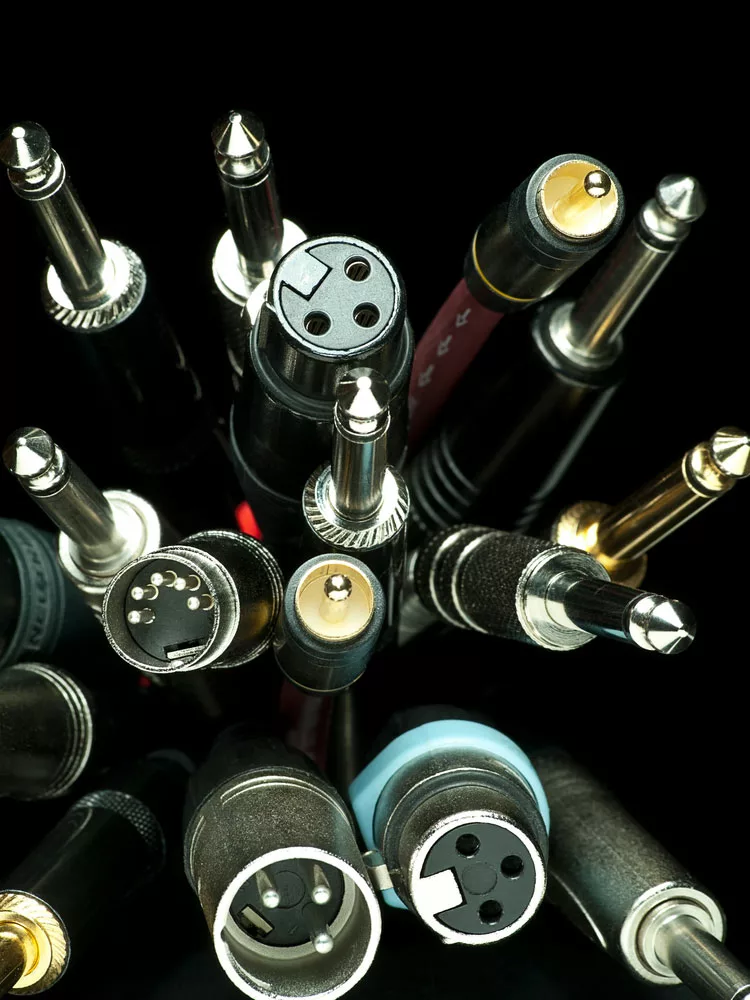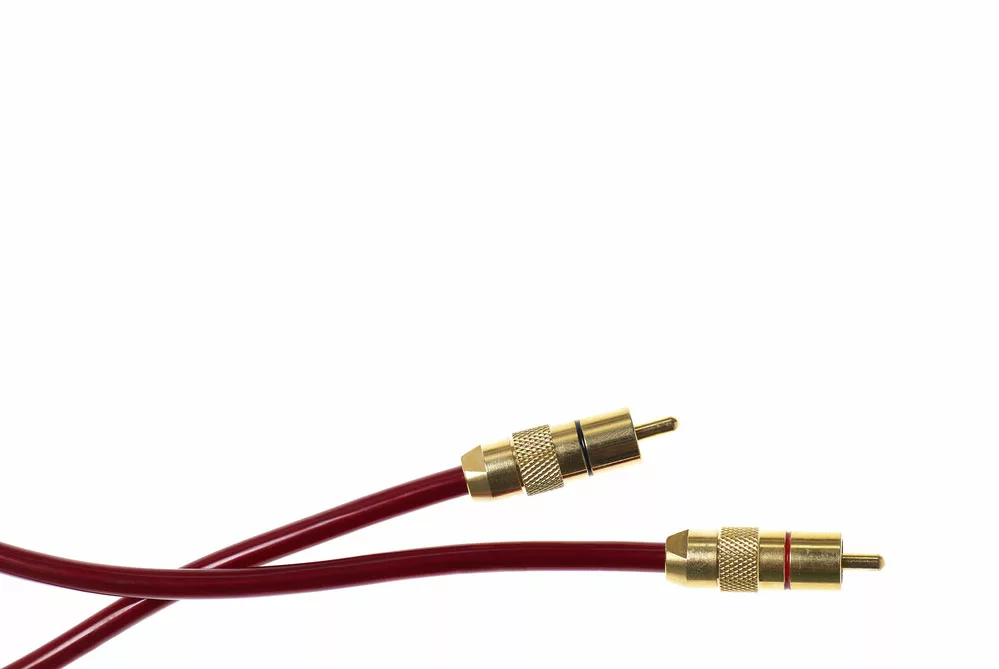In contrast to many electronic devices, speakers do not come with all the necessary cables and adapters. The Speaker wire consists of two insulated wires; one conductor connects to the amplifier’s positive jack, and the other to the speaker’s negative jack. Many marketing jargons associated with speaker wiring are meaningless. Still, there are several fundamentals to keep in mind for a robust signal, such as size and length. All and all, audio cable sizes are an essential consideration if you want high-quality sound and a balanced signal at a reasonable budget.
Table of Contents
How Speaker Wires Work
Electricity transmits an analog audio stream through speaker wires. This limited electrical signal has a waveform identical to the sound waves carrying the spoken or sung message. When it reaches the audio jack, the jack converts the signal back into sound (using an electromagnet).
The capacity of the wires to carry electricity is critical because electricity passes through them. The difficulty of an electric signal traveling from one side of a single cable to the other can be quantified by measuring the “resistance” of that wire, which depends on the cable size and length, so we’ll focus on that now.
Consider how electricity and wires work, like water and water hoses. A hose as thin as a drinking straw will make you spend a lot of time in the yard since the water will move so slowly when you water your plants. Speaker wires, which transmit electrical signals representing sound, can travel more quickly when they are more comprehensive than thin. To rephrase, signals face more hurdles when traveling across small cables.
The greater the distance a wire must go, the more difficult it is for electricity to flow from one end to the other. Thicker wire is needed to compensate for the increased resistance of a longer speaker wire run, which can be detrimental to the transmission of an audio signal.

Caption: Audio cables of different sizes
So, Does The Gauge Size Matter?
As an artist, you want the best sound quality from your speakers and wiring. If that’s the case, you may want to look further into the topic. In a few instances, the gauge size does make a difference.
The American Wire Gauge (AWG) system is the standard for measuring North America’s cable size. You may find the wire gauge as a decimal; lower numbers indicate greater thickness. Due to the increased area available for current passage, thicker cables’ electrical resistance decreases. The electrical resistance of a speaker wire is a major factor in how well it works because it interrupts the signal flow, affecting the sound quality.
Though wire gauge plays a significant role, electrical resistance also depends on its connection to other variables like length and substance. Also, you will need larger wires to accommodate the increased electrical resistance caused by these factors. Longer runs, high-power uses, and lower-impedance headphone amplifiers are all needed for thicker wire.
In general, you’ll want a thick gauge to allow for adequate current flow and a strong signal without being too cumbersome or expensive to work with in practice.
If you are wiring speaker cables through walls and wires, as they are lengthy, 12AWG or 14AWG wires are recommended, depending on the distance they need to travel. And the speaker wires should be thicker if you have low-impedance loudspeakers.
However, with standard 8-ohm speakers positioned at standard listening ranges from the sound source, it is irrelevant what size you select for a standard listener. Hence, most individuals won’t notice any difference if you choose 18AWG wire for your standard speaker installation, but 16AWG is your best bet.

Caption: Red audio cable with metal connectors
How to select a Speaker Wire Gauge
Your system’s optimal speaker cable gauge depends on the following:
Speaker Impedance
The amount of electricity required by your speaker system depends on its impedance. Under the assumption of a moderate length, you can look into the following guidelines to determine the appropriate impedance for the speaker wire:
- 4 Ohms or less: A decent starting point for speakers with an impedance of 4 ohms or less is a speaker wire with a gauge of 14 or 12. You’ll need a heavier gauge wire to accommodate the high power consumption of these speakers.
- 6 Ohms: Choose a 16-gauge wire if your speakers have a resistance of 6 ohms. That’s a reasonable compromise.
- 8 Ohms: Speakers with an 8-ohm impedance can use speaker wire with a gauge of 18 or 16, for runs of 50 to 75 feet, a size of 12 to 14 AWG may be more appropriate.
Speaker Wire Length
The length of the wire runs will also affect the required gauge size. The longer the distance an analog signal must travel, the greater is electric resistance that it will encounter. Most common home theatre setups won’t require significantly more cable than what’s already been detailed above.
Additionally, you should upgrade over 50 ft of wire to a heavier gauge for outdoor or event settings. Also, since resistance tends to increase exponentially with length, you should consider the 12 or 14 AWG in audio channels wherever possible. A good rule of thumb is to determine the length from the amplifier to the speaker, then add five feet on each end for RCA cables.
Speaker Wire Core Material
Several options exist, but stranded metal, which you can make by twisting together numerous pure copper wires, is by far the most prevalent. Copper’s low electrical resistance and low price make it a preferred choice for many applications.
As well as the common varieties of wire cores, you may also encounter:
Copper-Clad Aluminum
Even though aluminum has respectable electrical resistance, it is typically clad in copper to boost its performance. For comparison, aluminum’s resistance is 2.65×10-8 ohm meters (ΩM), with copper supplying 1.68×10-8 ΩM. Here is a table to check the resistance of copper-clad aluminum wire gauge.
Silver
Silver is usually promoted as the “premier” substance for serious music lovers. It has just slightly superior conductance — 1.59×10-8 ΩM — so you use a smaller wire. However, silver will be more costly than other metals, so you might as well just go with a thick copper wire and spend the same amount. Silver-plated copper wires are also possible and are used in a wide range of applications.
Oxygen-free Copper
Manufacturers claim that oxygen-free copper (OFC) cables provide superior sound quality because copper wires are formed to exact, oxygen-free specifications. However, compared to regular electrical copper, the benefits of OFC are negligible. Copper used in C11000, the standard for electrical use, is already 99.95% pure. The widespread belief in the market is that an additional half-cent doesn’t create an audible impact in home theater applications.
| Wire AWG | 2 Ohm Speaker | 4 Ohm Speaker | 6 Ohm Speaker | 8 Ohm speaker | 16 Ohm Speaker |
| 24 | 2 feet (0.6 meters) | 4 feet (1.2 m) | 6 feet (1.8 m) | 8 feet (2.3 m) | 15 feet (4.7 m) |
| 22 | 4 feet (1.1 meters) | 7 feet (2. meters) | 11 feet (3.3 t | 14 feet (4.4 meters) | 29 feet (8.8 meters) |
| 20 | 6 feet (1.8 meters) | 12 feet (3.6 meters) | 18 feet (5.3 meters) | 23 feet (7.1 meters) | 47 feet (14.2 meters) |
| 18 | 9 feet (2.8 meters) | 18 feet (5.6 meters) | 28 feet (8.4 meters) | 37 feet (11.2 meters) | 73 feet (22.4 meters) |
| 16 | 1 2 feet (3.6 meters) | 23 feet (7.2 meters) | 35 feet (10.7 meters) | 47 feet (14.3 meters) | 94 feet (28.7 meters) |
| 14 | 20 feet (6.2 meters) | 40 feet (12.3 | 61 feet (18. ) | 61 feet (24.7 meters) | 162 feet (49.4 meters) |
| 12 | 31 feet (9.4 meters) | 62 feet (18.9 meters) | 93 feet (28.3 meters) | l24 feet (37.8meters) | 248 feet (75.5meters) |
| 10 | 48 feet (14.6 m) | 96 feet (29.2 meters) | 144 feet (43.8 meters) | 191 feet (58.3 meters) | 383 feet (116.7 meters) |
| 8 | 72 feet (22 meters) | 144 feet (44 meters) | 216 feet (65.9 meters | 288 feet (87.9 meters) | 577 feet (175.8 meters) |
Caption: Copper Speaker Wire Chart
Conclusion
Numerous formulas exist that take into account the resistance of your audio input and loudspeakers, as well as the space between them, to determine the ideal gauge for your wiring.
12 gauge, 14 gauge, 16 gauge, and 18 gauge (AWG) are the most typical sizes for speaker wires. However, you can also find cables of greater sizes. Larger gauges are more expensive and take up more physical space, so they may be difficult to conceal behind a television or bend in corners. On the other hand, in order to boost the unbalanced stereo signals in certain situations, you may require larger gauges. Listeners have varying sound preferences, so check some of them out, listen for yourself, and please let us know which one you like.
